Leg Day at Home: No Gym? No Excuses. Build Pillars of Strength Right Where You Stand
Let’s talk leg day. That mythical, often-dreaded, yet utterly essential cornerstone of any serious fitness routine. Maybe the gym feels intimidating, inconvenient, or just plain inaccessible right now. Maybe you’re short on time or space. Whatever the reason, hear this loud and clear: You can build incredibly strong, powerful, and defined legs without ever leaving your living room. Forget the myth that you need racks of weights or fancy machines. Your body, some creativity, and a bit of know-how are your most powerful tools. Welcome to the ultimate guide to conquering leg day at home.
Why Leg Day Isn't Just Vanity, It's Vitality
Skipping leg day isn’t just a meme; it’s a missed opportunity for foundational health. Your legs house the largest muscle groups in your body – your quads (front thighs), hamstrings (back thighs), glutes (butt), and calves. Training them hard delivers benefits far beyond aesthetics:
Metabolic Firestorm: Big muscles burn serious calories, both during your workout and for hours afterward (Excess Post-exercise Oxygen Consumption - EPOC). Studies consistently show compound leg exercises elicit a significant metabolic boost.
Hormonal Harmony: Intense leg work stimulates the release of powerful anabolic hormones like growth hormone and testosterone, beneficial for muscle growth everywhere and overall vitality.
Functional Foundation: Strong legs mean easier climbing, running, jumping, lifting groceries, playing with kids, and preventing falls as we age. They are literally your base for navigating the world.
Injury Armor: Balanced leg strength stabilizes your knees, hips, and ankles, protecting you during other activities and daily life. Weak glutes and hamstrings are notorious culprits in back and knee pain.
Confidence Booster: Let’s be real – feeling strong and capable in your own body is powerful. Sculpted, functional legs are a badge of dedication.
Your Minimalist Home Leg Day Arsenal: Less is More
The beauty of home leg training? It requires almost nothing. Forget expensive gear; focus on movement mastery:
Your Bodyweight: Still the most underrated and versatile piece of equipment. Master it first.
A Sturdy Chair or Couch: Perfect for step-ups, Bulgarian split squats, box squats, and assisted pistol squats.
A Wall: Essential for wall sits and handstand practice (for advanced calves/core, indirectly helping legs).
A Towel or Slider: (Optional but great) Turns hardwood/tile floors into a surface for sliding lunges or hamstring curls.
Backpack or Duffel Bag: (Progressions) Load it with books, water bottles, or bags of rice for added resistance.
Resistance Bands: (Highly Recommended Investment) Compact, cheap, and incredibly versatile. Loop bands add lateral resistance (great for glutes), mini-bands add constant tension, and longer bands can assist or add resistance to squats and lunges. A study in the Journal of Sports Science & Medicine found elastic band training significantly improved lower body strength and power in athletes.
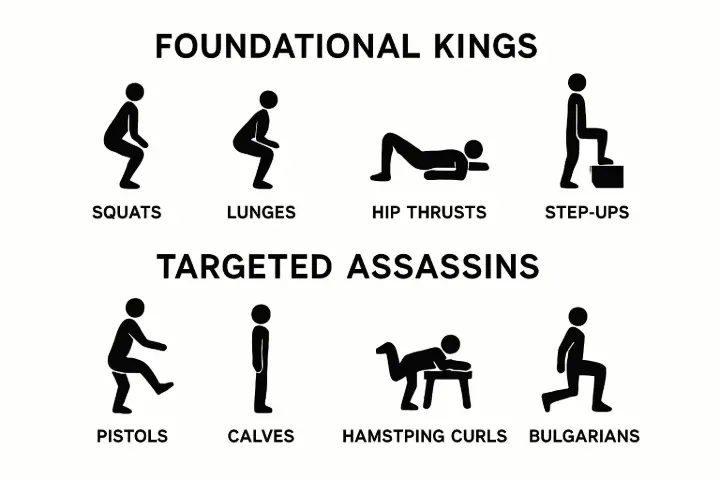
The Moves: Building Your Leg Day Blueprint (With Form Focus!)
The key is quality over quantity. Perfect form trumps endless reps every time. Here’s your home leg day exercise toolkit, broken down:
The Foundational Kings (Compound Movements):
Bodyweight Squats: The cornerstone. Feet shoulder-width or slightly wider, toes slightly out. Sit back and down like lowering into a chair, keeping chest up, core tight. Drive through your entire foot (heels, balls, toes) to stand. Insight: Go deeper! Research (like that from Bret Contreras, the "Glute Guy") shows deeper squats (below parallel) significantly increase glute and hamstring activation. Beginner Tip: Squat to a chair touch-and-go. Progression: Slow down the descent (3-4 seconds), pause at the bottom, explode up. Add weight (backpack) or a band above the knees.
Lunges (Forward, Reverse, Walking): Unilateral kings. Step forward (or backward), lower until both knees are bent at roughly 90 degrees, front knee tracking over the ankle (NOT past toes). Push back to start. Insight: Reverse lunges are often easier on the knees. Walking lunges add a cardio element. Form Focus: Keep your torso upright – imagine a string pulling your head up. Progression: Add weight, hold bottom position, use deficit (step onto a book for deeper stretch).
Glute Bridges & Hip Thrusts: Target the powerhouse – your glutes! Lie on your back, knees bent, feet flat. Drive through your heels, squeezing glutes to lift hips until body forms a straight line from shoulders to knees. Insight: Hip Thrusts (shoulders elevated on a sturdy sofa/bench) allow a greater range of motion and glute activation – studies show they often outperform squats for pure glute development. Form Focus: Avoid hyperextending your lower back at the top; the lift comes from the glutes/hamstrings. Progression: Add weight across hips, use a band above knees, single-leg variations.
Step-Ups: Simple but brutal. Use a sturdy chair, bench, or step. Place one foot firmly on the step, drive through that heel to lift your body up, bringing the other foot to tap the step. Step down controlled. Insight: Focus on pushing with the working leg on the step, don't just spring off the back foot. Progression: Increase step height, add weight, hold dumbbells/kettlebell (or backpack).
The Targeted Assassins (Isolation & Assistance):
Pistol Squats (Advanced): The ultimate bodyweight leg challenge. Stand on one leg, extend the other forward. Lower down as far as possible on the standing leg, keeping the extended leg off the ground, then push back up. Insight: Requires immense strength, balance, and mobility. Beginner Path: Use a TRX strap or door frame for balance assist, squat to a high box, or hold onto a pole. A study in the Journal of Strength and Conditioning Research found pistol squats produced significant muscle activation in the quads and glutes comparable to weighted back squats relative to bodyweight.
Calf Raises: Don't neglect the lower legs! Stand on the edge of a step or sturdy book, heels hanging off. Rise up onto your toes as high as possible, squeeze calves, lower slowly below parallel for a stretch. Insight: Calves respond well to high reps and different tempos. Try seated calf raises (weight on knees) for the soleus muscle. Progression: Single-leg, add weight, slow negatives (5 seconds down).
Hamstring Sliders/Towel Curls: Lie on your back, heels on towels/sliders, hips lifted in a bridge. Slide heels away from you, straightening legs, then curl heels back in by bending knees, driving hips higher. Insight: Excellent for targeting the often-neglected hamstrings directly. Form Focus: Keep hips lifted throughout; don't let them sag.
Bulgarian Split Squats: Like a lunge on steroids. Stand a few feet in front of a chair/couch, place the top of one foot behind you on the surface. Lower straight down, keeping front knee tracking over ankle, until back knee nearly touches the floor. Drive up. Insight: Incredible for quad and glute development, improves balance. Form Focus: Keep torso mostly upright. Progression: Add weight.
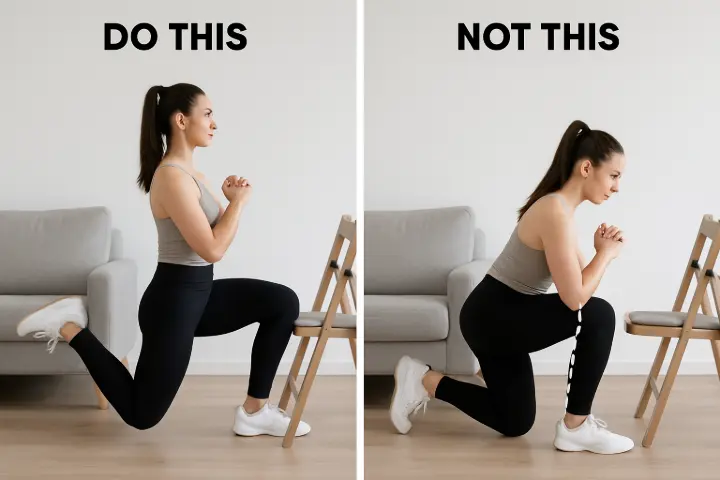
Crafting Your Killer Home Leg Day Routine
Don't just do random exercises. Structure your workout for maximum effect. Here are sample routines based on level:
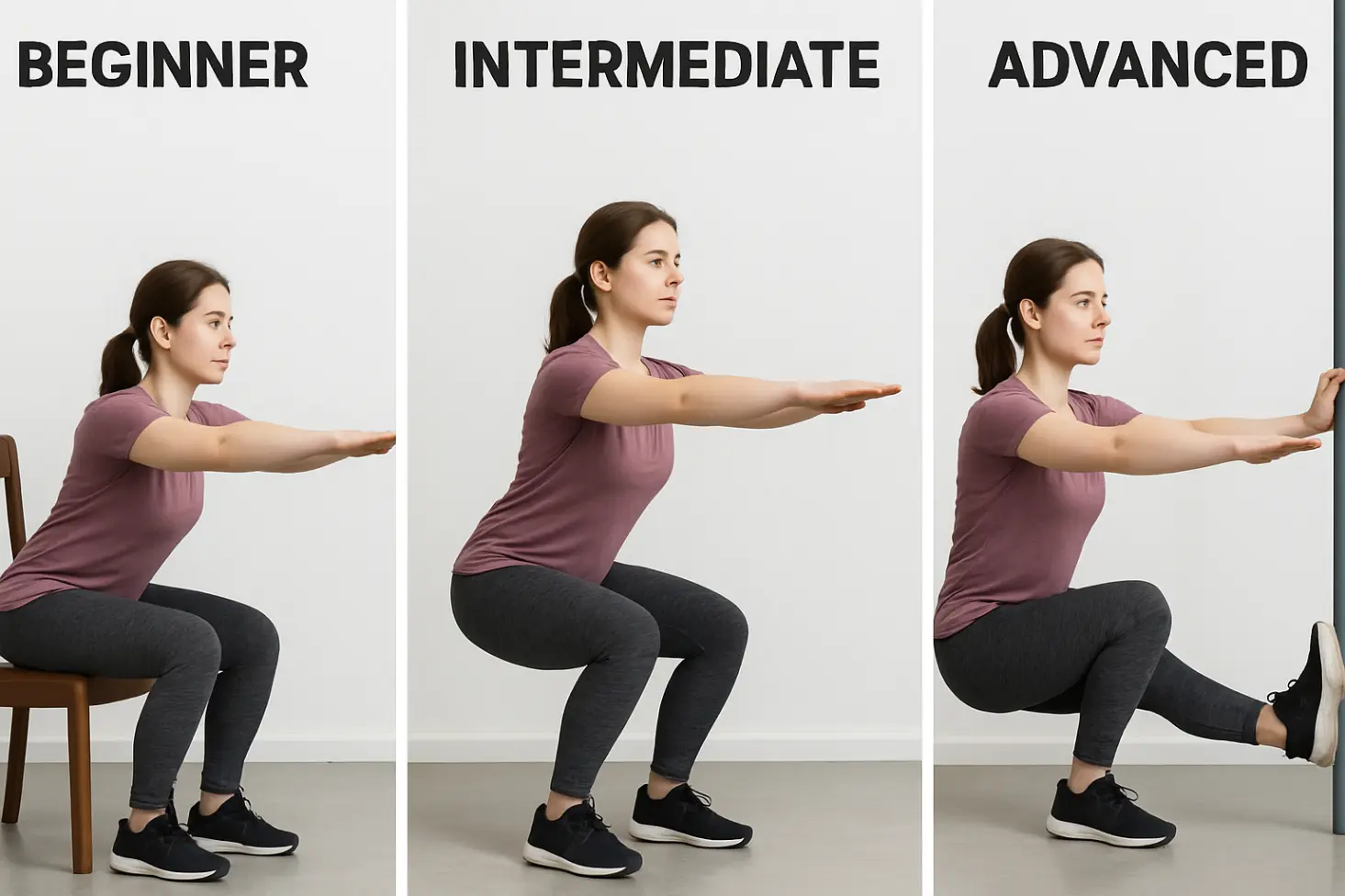
Beginner (Focus: Learning Form, Building Foundation):
Bodyweight Squats: 3 sets of 12-15 reps
Glute Bridges: 3 sets of 15-20 reps
Reverse Lunges (alternating legs): 3 sets of 10 reps per leg
Standing Calf Raises: 3 sets of 20 reps
Rest: 60-90 seconds between sets. Focus on perfect movement.
Intermediate (Focus: Increasing Intensity, Adding Volume):
Bodyweight Squats (Slow Tempo: 3 sec down, 1 sec up): 4 sets of 15 reps
Bulgarian Split Squats: 3 sets of 10-12 reps per leg
Hip Thrusts (with band above knees or backpack): 3 sets of 12-15 reps
Walking Lunges: 3 sets of 12 steps per leg
Seated Calf Raises (with weight on lap): 4 sets of 15 reps
Rest: 45-60 seconds between sets. Push close to muscle fatigue.
Advanced (Focus: Maximal Challenge, Strength & Hypertrophy):
Pistol Squat Progressions (Assisted or Box): 4 sets of 6-8 reps per leg
Weighted Hip Thrusts (heavy backpack/duffel): 4 sets of 8-10 reps
Bulgarian Split Squats (with weight): 3 sets of 8 reps per leg
Hamstring Slider Curls: 3 sets of 12-15 reps
Single-Leg Calf Raises (on step): 4 sets of 15-20 reps per leg
Rest: As needed (60-90 sec), focus on maximum effort per set. Consider supersets (e.g., squats immediately followed by calf raises).
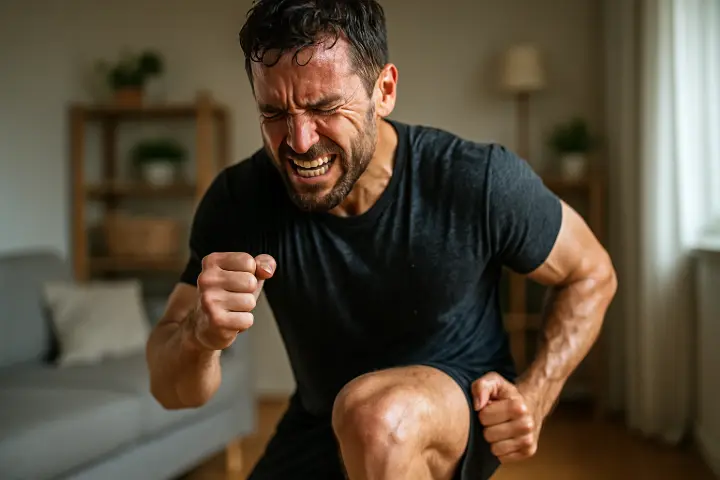
Key Workout Principles:
Warm-Up (5-10 min): NEVER skip! Dynamic moves: leg swings (forward/back, side/side), walking knee hugs, walking butt kicks, bodyweight squats (slow), cat-cow stretch. Get blood flowing.
Progressive Overload: This is the non-negotiable key to getting stronger and building muscle. If it gets easier, you MUST make it harder. How?
Add reps or sets.
Slow down the tempo (e.g., 4 seconds down, 1 second pause, explode up).
Shorten rest periods.
Increase range of motion (deeper squats, higher step-ups).
Add resistance (bands, backpack, improvised weights).
Move to harder variations (e.g., standard lunge -> deficit reverse lunge -> Bulgarian split squat).
Mind-Muscle Connection: Don't just go through the motions. Focus intensely on feeling the target muscles (glutes, quads, hams) working throughout each rep. Squeeze at the peak contraction!
Cool-Down & Stretch (5-10 min): Static stretches held for 20-30 seconds each: Quad stretch, hamstring stretch (seated or standing), glute stretch (figure-4), calf stretch. Aids recovery and flexibility.
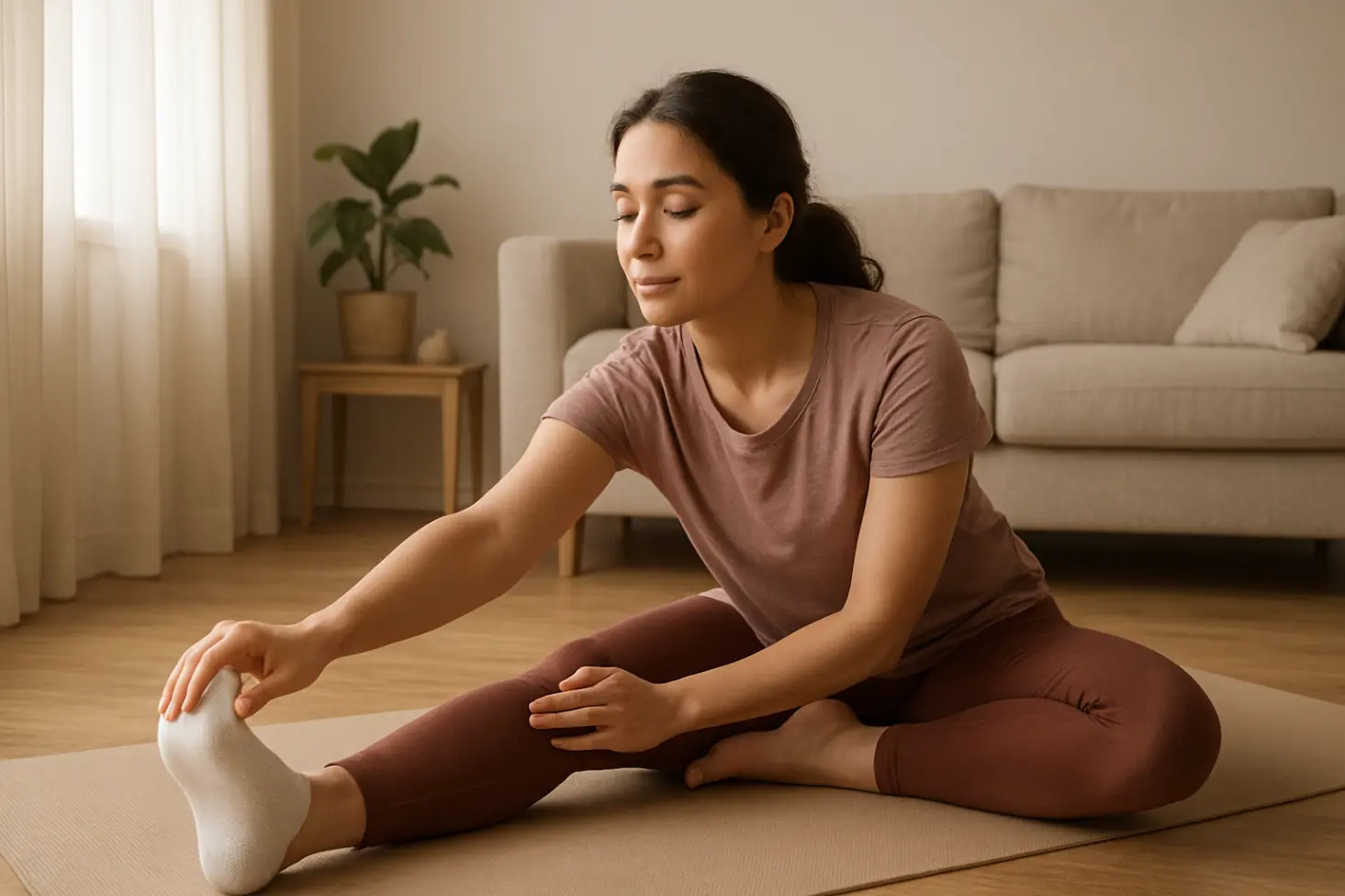
The Home Advantage: Consistency is King
The single biggest benefit of home leg training? Consistency. No commute, no waiting for equipment, no gym anxiety. You can fit it in whenever you have 30-45 minutes. This removes the biggest barrier to progress – skipping workouts. Make leg day a non-negotiable appointment in your calendar, just like an important meeting.
Embrace the Burn, Reap the Rewards
Leg day at home is challenging. It demands focus, effort, and pushing through discomfort. You might wobble on lunges, feel the fiery burn in your quats during slow squats, or curse the existence of Bulgarian split squats. But that’s the point. That burn is the signal of growth. That wobble is your balance improving. That effort is forging strength where it matters most.
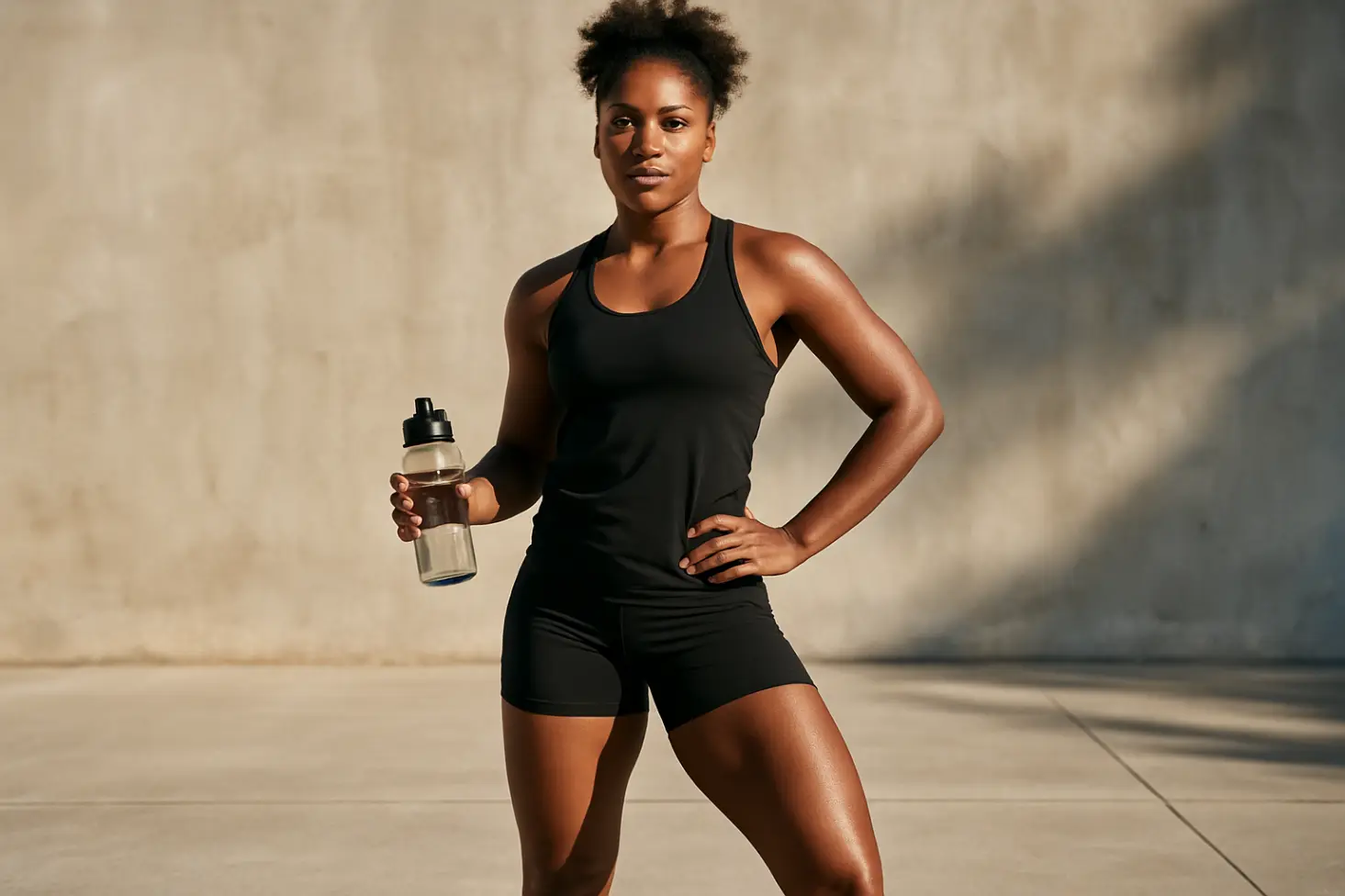
Forget the limitations. Your living room, bedroom, garage, or even a patch of backyard is your gym. Your body is your barbell. With the knowledge in this guide and the dedication to apply it consistently, you have everything you need to build legs that are not just strong for show, but strong for life. So, clear some space, lace up your shoes (or go barefoot!), and get ready to conquer your next home leg day. Your foundation – and your future self – will thank you. Now go build those pillars!